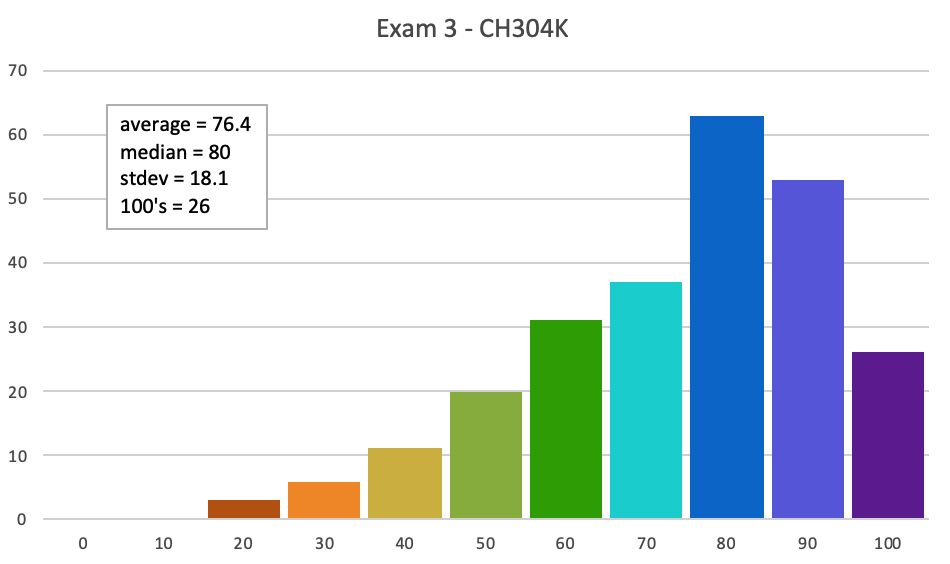exam 3
11/6
exam 3
11/6
Wednesday 11/6
2-2:50pm
UTC 2.102A

What we provide on Exams We will provide all students with:
The cover page with the periodic table will be very similar to the one available in the Appendix of the ChemBook website (Chapter 10).
NOTE: There are NO calculations of any type and therefore NO calculators of any type will be allowed.
Coverage: Exam 3 covers all the material that was covered on HW's 05 and 06. ChemBook Chapters: The exam covers all of Chapter 4 although mainly sections 5-12 because 1-4 was on exam 2, but you still need to know that stuff. Topics are covalent bonding, electron dot and line structures, abbreviated line structures where you figure out the number of carbons and hydrogens, formal charge assignment and use, resonance, VSEPR theory including electronic and molecular geometries, bond order - strengths and lengths, environmental issues and science: greenhouse gases and global warming and ozone layer depletion.
Questions: The exam will have 20 multiple choice questions. This means that each question is worth 5 points. We will only grade you by what is bubbled in on the answer sheet that you turn in. We will not look at your exam copy for answers, nor consider them in any way. Bubble carefully and correctly.
Students will know...